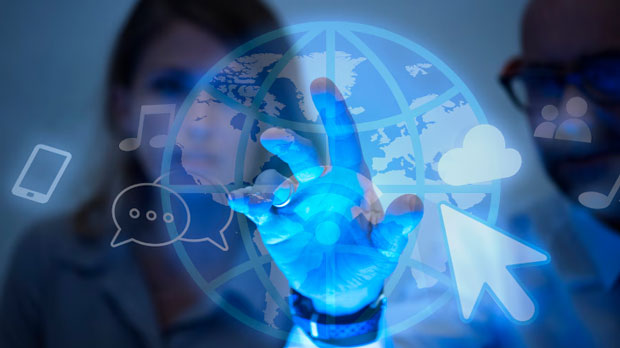When evaluating proxy servers, particularly in wireless network environments, the connection success rate is a critical metric to consider. Both Blue Proxy and PYPROXY offer distinct functionalities, but how do they compare when it comes to maintaining stable connections in wireless networks? In this article, we will delve into the performance of these proxies, analyze their connection success rates under varying wireless conditions, and explore which one might be more reliable based on different use cases. Understanding the Role of Proxies in Wireless NetworksBefore diving into the comparison of Blue Proxy and PyProxy, it's essential to understand the role of proxies in wireless network environments. A proxy server acts as an intermediary between the client and the internet. It can provide benefits such as enhanced security, privacy, and bypassing geographical restrictions. In wireless networks, which are often subject to interference, congestion, and varying signal strengths, the ability of a proxy to maintain a stable and fast connection becomes crucial.Wireless networks, especially those operating on Wi-Fi, can face challenges like signal drop-offs, network congestion, or interference from other devices. These factors directly affect how well a proxy performs, as any disruption in the network can cause connectivity issues, slower speeds, or even total disconnection. Therefore, evaluating the success rate of Blue Proxy and PyProxy in such environments is vital for users who rely on these proxies for secure and uninterrupted internet access.Factors Affecting Proxy Performance in Wireless EnvironmentsSeveral factors influence the connection success rate of proxies in wireless environments. These include network congestion, signal strength, distance from the access point, interference from other wireless devices, and the type of encryption or tunneling protocols used by the proxies.1. Network Congestion: Wireless networks are often shared by multiple devices, leading to congestion. High congestion can cause latency, packet loss, and reduced bandwidth, which impacts proxy performance. Proxies that are better optimized to handle these conditions tend to have higher connection success rates.2. Signal Strength: The strength of the Wi-Fi signal affects the reliability of a proxy connection. A weak signal can result in packet loss and slower speeds, causing the proxy to struggle with maintaining a stable connection.3. Interference: Other wireless devices operating on the same or overlapping channels can cause interference. This can disrupt the connection to the proxy server, especially in environments with many wireless devices, such as offices or public spaces.4. Encryption and Protocols: Proxies use encryption protocols to secure data traffic. The complexity and type of encryption, such as SSL/TLS or VPN tunneling, can affect the overall performance. Proxies with more efficient encryption protocols might experience fewer drops in wireless networks.Blue Proxy: Performance in Wireless EnvironmentsBlue Proxy, known for its simplicity and flexibility, is often used by developers to create custom proxy solutions. It relies on Python libraries to facilitate proxy functionality, which provides a high degree of customizability. However, when it comes to wireless network environments, Blue Proxy's performance may fluctuate depending on several factors.1. Adaptability: Blue Proxy is highly customizable, allowing developers to tweak configurations for specific network conditions. This adaptability can help users optimize their connection based on varying signal strengths and congestion levels in wireless environments. For example, Blue Proxy can be configured to switch between different proxy types (e.g., HTTP, SOCKS5) based on network performance, which could improve connection reliability.2. Network Load: Blue Proxy’s connection success rate can be impacted by high network load. When operating in wireless networks with limited bandwidth, Blue Proxy may struggle to maintain consistent connections. This is particularly evident in environments with high interference or low signal strength, where Blue Proxy may experience latency or even timeouts.3. Packet Loss: Blue Proxy's connection stability is also affected by packet loss in wireless environments. Although the proxy itself is designed to handle intermittent connectivity issues, prolonged packet loss can result in a lower connection success rate.4. Encryption Efficiency: Blue Proxy typically supports basic encryption protocols, which can be a double-edged sword. While encryption ensures data privacy, it can also increase the overhead on wireless connections, leading to slower speeds or increased disconnections, especially on networks with low signal strength.PyProxy: Performance in Wireless EnvironmentsPyProxy is often marketed as a solution for users who prioritize performance and security. Unlike Blue Proxy, PyProxy tends to have more robust features aimed at maintaining stable connections, even in challenging wireless environments.1. Optimized for Wireless Networks: PyProxy is often optimized for wireless network environments, with features such as automatic connection retry and adaptive routing to bypass congested or weak wireless signals. These optimizations help improve the proxy’s connection success rate, especially in areas with variable signal strength.2. Advanced Protocol Support: PyProxy supports a wider array of advanced encryption and tunneling protocols, including SSL/TLS and OpenVPN. These protocols are designed to provide secure and stable connections, even under suboptimal network conditions. PyProxy’s ability to dynamically select the best encryption protocol based on network performance contributes to its higher connection success rate compared to Blue Proxy in many wireless scenarios.3. Reliability in High Interference Environments: PyProxy is more reliable in environments with heavy interference from other wireless devices. Its built-in error-correction mechanisms and robust traffic handling protocols ensure that users experience fewer disconnections or slowdowns, even in congested or noisy network environments.4. Low Latency: One of the standout features of PyProxy is its low-latency performance. In wireless environments, where latency can cause significant issues for proxy servers, PyProxy’s ability to maintain low latency even in high-traffic conditions sets it apart from Blue Proxy.Comparison of Blue Proxy and PyProxy: Connection Success Rate in Wireless EnvironmentsBased on the above factors, a direct comparison between Blue Proxy and PyProxy in wireless environments reveals several key insights:- Connection Stability: PyProxy tends to offer a higher connection success rate due to its optimizations for wireless networks, advanced protocol support, and error-correction mechanisms. Blue Proxy, while customizable, struggles more in environments with weak signals or high interference.- Adaptability: Blue Proxy excels in terms of customization, allowing developers to tailor the proxy to their specific network conditions. However, this requires technical expertise and may not always result in improved performance unless configured correctly.- Network Load: In environments with heavy congestion, PyProxy’s ability to adapt to changing conditions and its use of advanced protocols ensures better reliability and performance than Blue Proxy, which may experience timeouts or slower speeds.- Security: Both proxies offer secure connections, but PyProxy’s support for more advanced encryption protocols gives it an edge in terms of maintaining stable, encrypted connections over wireless networks.In conclusion, when comparing Blue Proxy and PyProxy in wireless network environments, PyProxy generally outperforms Blue Proxy in terms of connection success rates. PyProxy’s optimizations for wireless conditions, advanced encryption protocols, and robust error-correction mechanisms make it the more reliable option for users in environments with fluctuating signal strength and network congestion. However, Blue Proxy’s high level of customizability may appeal to developers who are willing to invest time into fine-tuning the proxy for specific network conditions. Ultimately, the choice between the two proxies depends on the specific needs of the user, including the level of technical expertise and the nature of the wireless network in use.
Sep 15, 2025


































































